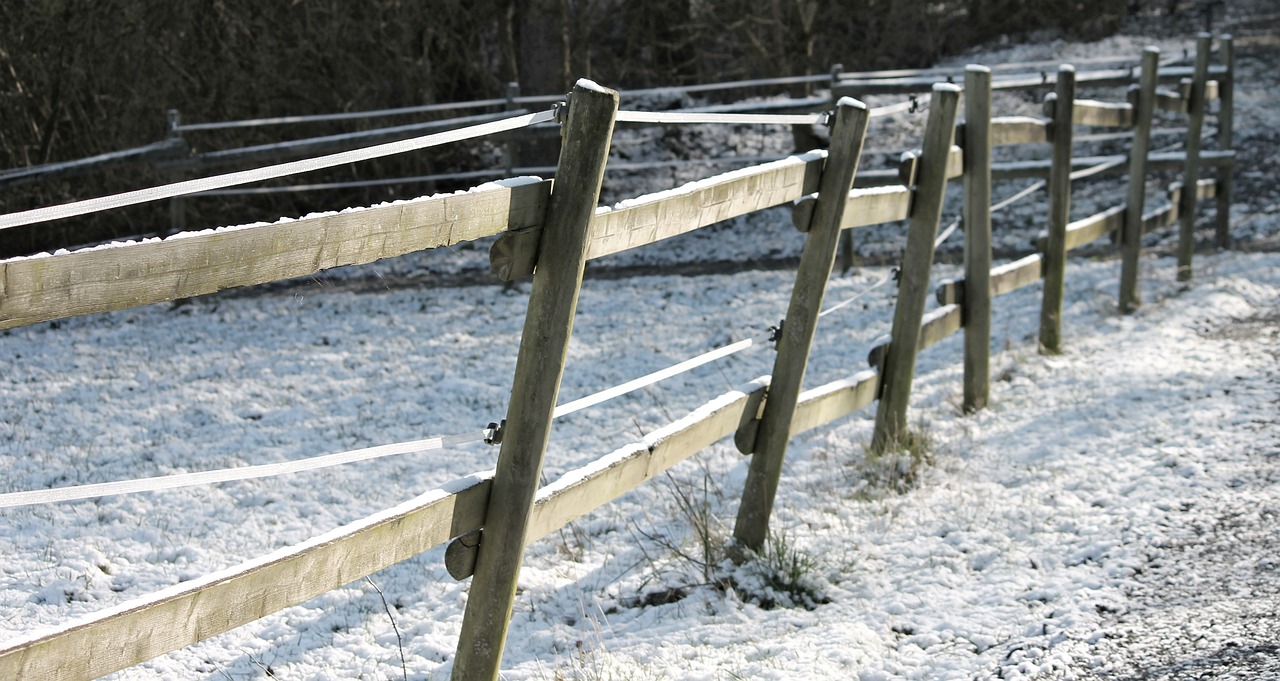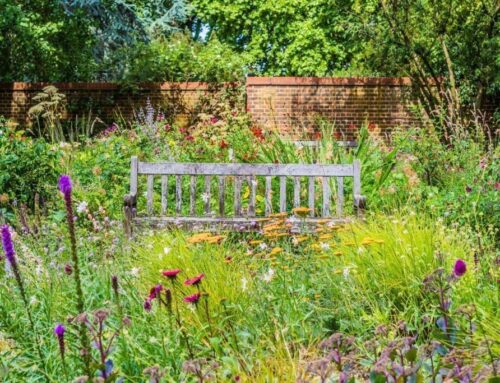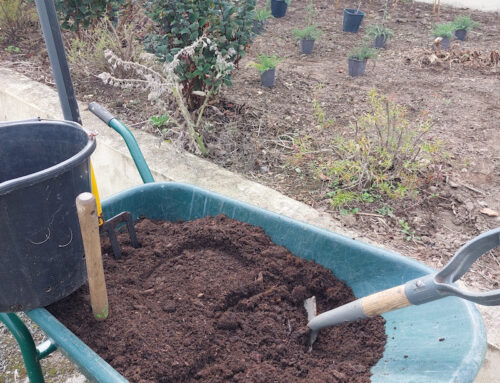February is a month of transition in the garden. The days are starting to get longer and the weather is starting to warm up, but the ground is still frozen and the plants are dormant. Despite the wintery conditions, there are still a few essential jobs in February that need to be done in order to prepare your garden for the spring.
From cleaning and organizing tools to planning and starting seeds indoors, there are plenty of ways to get a jump start on your gardening goals. In this blog post, I’ll outline some of the key tasks to tackle in February to set yourself up for success in the garden. Whether you’re an experienced gardener or just starting out, these tips will help you get your garden ready for the season ahead. So let’s get started!
The To-Do List
- Prune trees and shrubs: Prune dead or damaged branches from trees and shrubs. This will help encourage new growth and keep your plants healthy.
- Divide and transplant perennials: If you have overgrown perennials, now is a good time to divide them and transplant the divisions to new areas of your garden.
- Plant cold-hardy vegetables: February is a good time to plant cold-hardy vegetables like peas, lettuce, and radishes in your garden.
- Start seeds indoors: If you want to get a jump start on the growing season, consider starting seeds indoors in February. This way, you can transplant the seedlings into your garden once the weather warms up.
- Fertilize your lawn: Use a fertilizer to help your lawn recover from the winter months and get a head start on the growing season.
- Clean up your garden beds: Remove any dead foliage or debris from your garden beds to prepare them for new growth.
- Repair or replace garden structures: Check your garden structures, such as fences, arbors, and trellises, for damage and make any necessary repairs.
- Check your irrigation system: Make sure your irrigation system is working properly and make any necessary repairs.
- Plan your garden layout: Use this time to plan out your garden layout for the coming growing season. Consider what vegetables, flowers, and other plants you want to include and where you want to plant them.
Lets take a look at three of these February jobs in a little more detail below.
Fertilise your lawn: Give the roots an early boost
 Fertilizing your lawn during the winter months is essential to ensure that it recovers from the harsh weather and looks lush and green come spring. One of the best times to fertilize your lawn is in February, as the ground is starting to warm up and the grass is beginning to grow again. When selecting a fertilizer, it’s important to look for one that is balanced with phosphorus and potassium and low in nitrogen. We are looking to help the plant strengthen its roots and fight diseases at this time of year and we do not want to encourage much leaf growth.
Fertilizing your lawn during the winter months is essential to ensure that it recovers from the harsh weather and looks lush and green come spring. One of the best times to fertilize your lawn is in February, as the ground is starting to warm up and the grass is beginning to grow again. When selecting a fertilizer, it’s important to look for one that is balanced with phosphorus and potassium and low in nitrogen. We are looking to help the plant strengthen its roots and fight diseases at this time of year and we do not want to encourage much leaf growth.
When applying the fertilizer, be sure to follow the instructions on the package carefully. The amount and frequency of application will vary depending on the product you choose. Generally, it’s recommended to apply the fertilizer when the grass is dry, and to avoid applying it during frost or when the grass is under stress.
It’s also important to water the fertilizer in well after you apply it. Doing so will help to ensure that the fertilizer reaches the roots of the grass and is not lost to evaporation.
In addition to fertilizing, it’s also important to make sure that your lawn has adequate water, sunlight and mowing height to maintain a healthy growth. Regular mowing, watering and aeration will help to improve the soil quality and promote healthy growth.
Overall, fertilizing your lawn in February is an important step to ensure that it recovers from the winter months and looks lush and green come spring. By selecting a fertilizer balanced with phosphorus and potassium and applying it according to the instructions, along with proper watering, sunlight and mowing, you can give your lawn the best chance for a healthy recovery.
Clean up garden beds: Keep it healthy & neat
Cleaning up your garden beds as the snow melts and the frost thaws is an important step in preparing your garden for the upcoming growing season. Removing dead foliage and debris from your garden beds allows for new spring growth to flourish and prevents pests and diseases from overwintering in the debris. That being said, I would like to encourage you to leave a small out of the way area of the garden covered with leaves and twigs. This provides a little food larder for some of our foraging garden birds such as the Robin and Blackbird.
When cleaning up your garden beds, you can use a rake to remove any leaves, twigs, and other debris that have accumulated over the winter. Raking also helps to level out the soil and smooth out any bumps or indentations that may have formed over the winter.
Another important step in cleaning up your garden beds is to use a pair of pruners to trim back any dead or damaged branches on your shrubs and trees. This will help to promote healthy new growth, and it can also help to control the shape and size of your plants. Additionally, removing dead or damaged branches can also help to prevent pests and diseases from taking hold in your garden.
Another idea is to add a layer of mulch to your garden beds to help suppress weeds, retain moisture and add organic matter to the soil. Mulch can be made from materials such as wood chips, straw, or leaves and can be applied in early spring to protect the soil from erosion and help retain moisture.
If you haven’t already done so, it’s also a good idea to divide any perennials that have become overcrowded in the garden. Dividing perennials can help to control their size, promote healthy growth, and increase the number of plants in your garden.
Overall, cleaning up your garden beds as the snow melts and the frost thaws is an important step in preparing your garden for the upcoming growing season. Removing dead foliage and debris, trimming back dead or damaged branches, adding mulch and dividing perennials can all help to promote healthy growth and improve the overall appearance of your garden.
Repair or replace garden structures: Make it safe & interesting
 Repair or replace garden structures: The winter weather can be harsh on garden structures such as fences, arbors, and trellises. Take the time to inspect these structures for any damage and make any necessary repairs. If a structure is beyond repair, consider replacing it with a new one. This is also a great time to make any changes or additions to your garden layout, such as adding a new trellis or arbor to support climbing plants.
Repair or replace garden structures: The winter weather can be harsh on garden structures such as fences, arbors, and trellises. Take the time to inspect these structures for any damage and make any necessary repairs. If a structure is beyond repair, consider replacing it with a new one. This is also a great time to make any changes or additions to your garden layout, such as adding a new trellis or arbor to support climbing plants.
The winter weather can take a toll on garden structures such as fences, arbors, and trellises. It’s important to regularly inspect these structures for any damage, such as rotting wood, loose or missing nails, or rusted metal. If you notice any damage, it’s important to make repairs as soon as possible to prevent further deterioration and ensure the structure remains stable and safe.
If a structure is beyond repair, it’s worth considering replacing it with a new one. For example, if your wooden fence is rotting, it may be more cost-effective in the long run to replace it with a new wood or vinyl fence. Similarly, if your metal trellis is rusted, it may be more durable to replace it with a new aluminum or stainless steel trellis.
This is also a great time to make any changes or additions to your garden layout. If you’re looking to add some vertical interest, consider adding a new trellis or arbor to support climbing plants such as roses, clematis or grapevines. A new trellis or arbor can also be a great way to add privacy to your garden or create a focal point.
Another idea is to add a raised bed to your garden, which can be used to grow vegetables, herbs, or flowers. Raised beds are a great option for gardens with poor soil quality or drainage, and they also make it easier to control the soil and water.
Additionally, if you have a shady area in your garden, you can consider adding a pergola. Pergolas are a great way to add some shade to your garden, and they can be used to support climbing plants like ivy and jasmine.
Overall, taking the time to inspect and repair or replace garden structures is an important step in maintaining the overall health and appearance of your garden. Consider making changes or additions to your garden layout to improve its function and aesthetic appeal.
Happy Gardening :)
By taking care of these tasks in February, you’ll be well on your way to a beautiful and productive garden this spring. Remember to stay warm and dry while you work, and take the time to enjoy the signs of new growth that are starting to appear. With a little bit of care and attention, your garden will be ready to welcome the new season with open arms. If you were not able to get out in the garden in January due to bad weather, catch up on my January garden Jobs.





